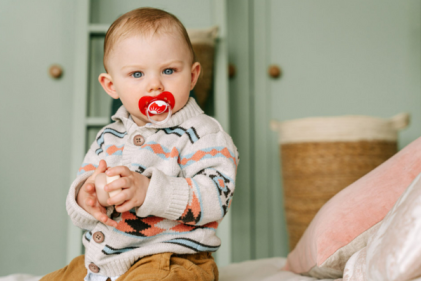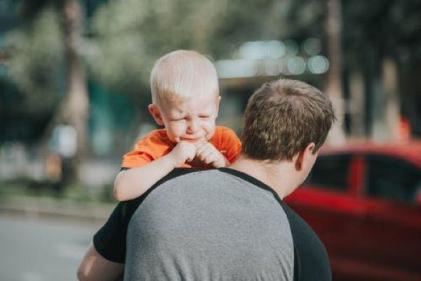Rearward facing baby seat:
A rearward-facing seat provides the best protection for your baby’s head, neck and spine. It is safer than a forward facing seat which is why it is advisable to keep your baby in a rearward-facing car seat until they outgrow it, only moving them to a forward-facing seat when the top of their head is higher than the back of the seat or they have outgrown the maximum weight restriction of the baby seat. Rearward facing baby seats are suitable for babies from birth up until 6-9 months (Group 0) or who weigh up to 10 kgs (22lbs), or Group 0+ for babies roughly from birth to 12-15 months who weigh up to 13kg. They can be used in the front or the back seat of the car, although it is safer to seat them in the rear of the car and they should never be placed in the front in a car with passenger air bags.
Forward facing car seat
You should only move your child to a booster seat when they have outgrown the maximum weight for the child seat or their head is higher than the seat. Forward facing car seats are suitable for children weighing 9-18kg or approximately
between the ages of 9 months and 4 years.
Booster seat
Some booster seats have an inbuilt design which allows them to be converted into a booster cushion when your child is bigger by removing the back attachment. Booster seats are suitable for children weighing 15 – 25kg or approximately between the ages of 4 and 6 years.
Booster cushion
Booster cushions do not have an inbuilt harness to hold the child in place; instead the adult safety belt is fastened around the child and the seat. It is vital therefore that the safety belt is correctly adjusted. Booster cushions are suitable for children weighing 22-36kg and between the ages of 6 and 11/12 years.
Seatbelt
Seatbelts are designed for people who are at least 150cm (approx. 5ft) in height. It’s important that you don’t graduate your child to using a seat belt too early. Most children are ready to use a seat belt by the time they are about 11 years old,
although this will differ depending on the child. It’s also important to note that lap and diagonal seat belts (three-point) will provide greater protection than lap belts. The belt should be worn as tight as possible and the diagonal strap should rest just over the shoulder and not the neck. However, it is better to use a lap belt than no belt at all. If using a lap belt, it should be placed over the pelvis and not the stomach and worn as tight as possible.






